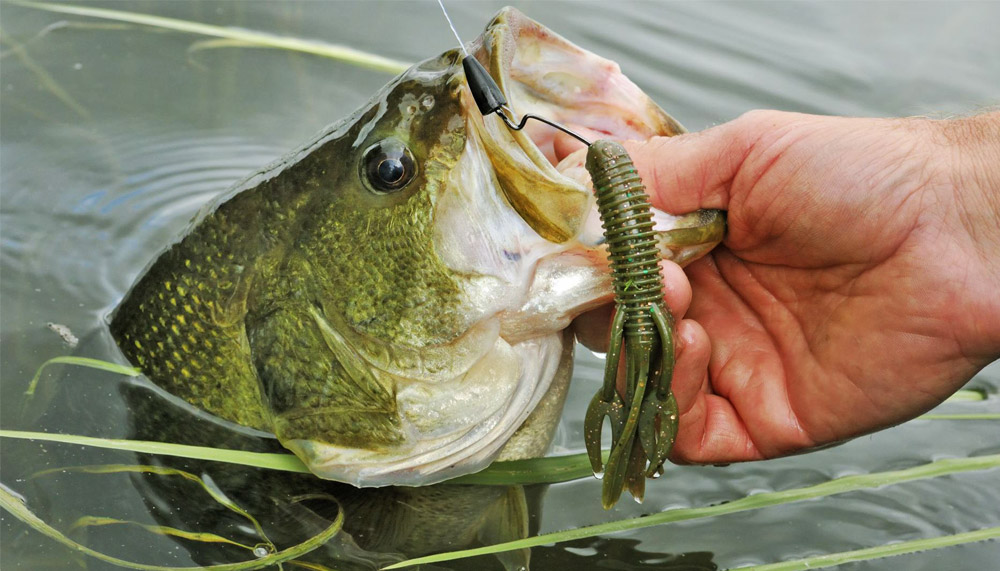
Hooked on Fishing: How This Journey Begins
Hello, fellow fishing enthusiasts! I’m Sergio Smirnoff, a seasoned professional angler with over 20 years of experience, casting my line into waters both tranquil and tumultuous. I’ve battled the elements, learned from my mistakes, and savored the victories, and now, I’m here to share my wealth of knowledge and passion for fishing with you. 🙌
🎣 Welcome to the Angler’s Paradise: Unraveling the Art of Fishing!
One chilly autumn morning 🍂 on Lake Erie, I was hunched in my boat, waiting. The sun had barely risen, casting a weak golden glow over the tranquil waters. I could almost hear the silence. Then suddenly, there was a tug, a force so strong it jolted me out of my quiet meditation. After a struggle that felt like an eternity, I reeled in a massive, writhing muskie – a catch that remains one of my most treasured memories to this day. 🎣🏆
But why am I sharing this story with you? Because that’s what fishing is all about – it’s not just about the catch, but the stories, the lessons, and the love for nature that comes along with it. 💚
Through this article, I aim to equip you with the knowledge and insights I’ve gathered over the years, covering everything from fishing basics and understanding fish behavior, to choosing the right bait and mastering various fishing techniques. Whether you’re a novice hoping to land your first catch or a seasoned angler looking to refine your skills, I’m confident you’ll find this guide helpful. 📘
🔶Stay tuned as we embark on this journey to unravel the secrets of the deep and transform you into a fishing pro. So, grab your gear, and let’s dive right in! 🌊
🏞️🎣 Back to Basics – Demystifying the World of Fishing
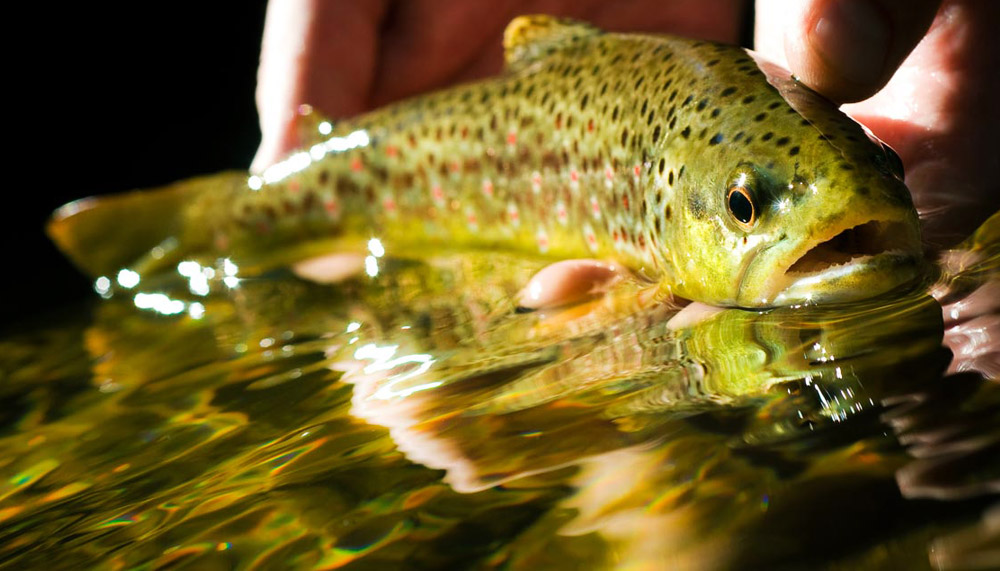
Fishing is a pursuit as diverse as the bodies of water we explore and the fish we seek. Whether you’re planning to cast your line in a serene lake, a flowing river, or the vast ocean, understanding the different types of fishing and the equipment they require is crucial. 🌊🐟
Freshwater Fishing 🏞️
Freshwater fishing is typically the first stop for beginners. In this type of fishing, you’re dealing with bodies of water like lakes, rivers, and streams. Freshwater fishing equipment tends to be lighter due to the smaller fish species. Here’s a basic checklist:
- Rod: Light to medium power rod.
- Reel: Spinning or baitcasting reel.
- Line: 4 to 12-pound test line.
- Hooks: Size varies based on the fish species.
Saltwater Fishing 🌊
Venturing into saltwater fishing means dealing with the vast oceans and seas. This could be from the shore, a pier, or off a boat (inshore or offshore). The gear here is more robust to handle larger species and the corrosive nature of saltwater. Here’s what you need:
- Rod: Medium-heavy to heavy power rod.
- Reel: Saltwater spinning or conventional reel.
- Line: 10 to the 60-pound test line.
- Hooks: Larger sizes for bigger fish.
Fly Fishing 🎣
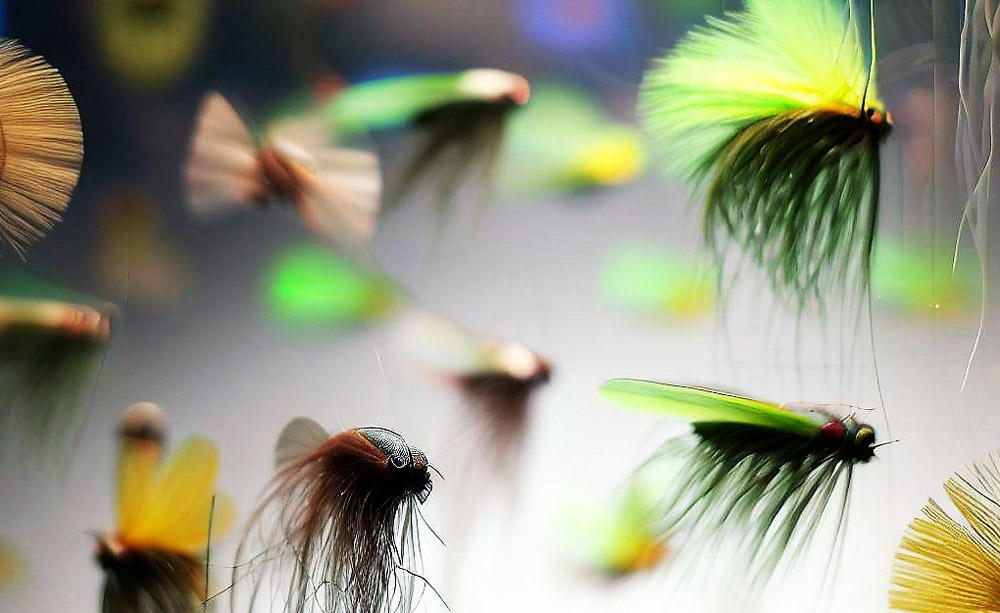
Fly fishing is a unique art where you use a specially crafted ‘fly’ to mimic real fish prey. It’s often used in both freshwater and saltwater environments. This type of fishing requires some specialized equipment:
- Rod: Fly rod, size depends on target species.
- Reel: Fly reel matched to the rod weight.
- Line: Special fly line, leader, and tippet.
- Hooks: Specific fly hooks used in fly tying.
Understanding your quarry’s behavior is fundamental in fishing. 🐠🧠 Each species has unique patterns in terms of their feeding habits, preferred habitat, and even the time of day when they’re most active. Observing and adapting to these behaviors can dramatically improve your success on the water.
For instance, bass are known to be more active during dawn and dusk, while trout often favor cooler, deeper waters. Familiarizing yourself with the local fish species in your chosen fishing spot can give you a significant advantage.
🔶Always remember, fishing is a journey of learning and discovery. So let’s get started on understanding the art of the catch. Up next, we’ll delve into the captivating world of fish behavior and habitats. Stay hooked! 🎣📚
🐟🔍 Dive Deeper – Understanding Fish and Their Behavior

Just as an artist studies their canvas, so too must an angler understand the intricacies of the fish they seek. Knowing different fish species, their habits, preferred conditions, and how seasonal and weather changes impact their behavior can drastically elevate your fishing game. Let’s dive into this fascinating world. 🌍💡
Unraveling Fish Species and Their Habits
Every fish species is unique, each bearing different characteristics and habits that influence their feeding and activity patterns. Here are a few popular ones:
- Bass 🐟: Known for their aggressive behavior, bass are ambush predators that love hiding in cover like weeds and rocks. They’re most active during the low light of dawn and dusk.
- Trout 🐠: These fish are more temperature sensitive, often seeking cooler, deeper waters in the heat. They have a diverse diet ranging from small insects to larger prey.
- Salmon 🐡: Salmon are anadromous, meaning they migrate from the ocean to freshwater streams to spawn. Timing your fishing trips with this migration can result in big catches.
Ideal Conditions for Catching Various Species
The right conditions can significantly increase your chances of a catch. For example, bass tends to feed more in warmer water temperatures (55-85°F), while trout prefer cooler conditions (45-65°F). Water clarity also plays a role. Murky waters may require using more vibrantly colored or noisy lures to attract fish, while clear waters might call for a subtler approach.
Seasonal and Weather Impacts on Fish Behavior
Seasonal shifts and weather changes have a profound impact on fish behavior. For example, in spring, as water temperatures rise, many fish species move towards shallow areas to spawn. Weather changes, too, affect fish activity. Many species are more active on overcast days. 🌥️ Also, changes in barometric pressure that often accompany weather changes can impact fish feeding habits.
🔶Remember, understanding your fishy friends is a combination of scientific knowledge and firsthand experience. So don’t be afraid to get out there, experiment, and learn from each fishing trip. Up next, we’ll guide you through the selection of the right bait – a crucial factor in fishing success. Stay tuned! 🎣💫
🐛🎣 The Bait Game – Choosing the Right Lure for Your Line
The heart of fishing lies in an age-old question: “What’s the best bait?” 🤔 Choosing the right bait can make a significant difference in your fishing success. From worms wriggling on hooks to meticulously crafted lures, there’s a vast arsenal at your disposal. Let’s take a closer look. 🕵️♂️💡
Unraveling the Bait Spectrum
The world of bait is diverse, ranging from natural offerings to man-made lures. Here’s a brief overview:
- Live Bait 🐛: This includes worms, minnows, leeches, and insects. Live bait can be highly effective because fish are accustomed to eating these in the wild.
- Cut Bait 🐟: Pieces of larger baitfish like mackerel or herring are used. This is particularly effective for predatory fish.
- Artificial Lures 🎣: These include a wide array of options like jigs, spinners, plugs, and soft plastics, each designed to mimic a certain kind of fish prey.
Live Bait vs. Artificial Lures: The Great Debate
Choosing between live bait and artificial lures often boils down to personal preference and the specific fishing situation. Here are some pros and cons:
- Live Bait Pros: Highly enticing to fish due to its natural appearance, scent, and movement. Can yield great results across a wide variety of fish species.
- Live Bait Cons: Requires special storage to keep alive. Can be messy and requires frequent changing.
- Artificial Lures Pros: Wide variety available to mimic different prey species. Durable and can be reused multiple times.
- Artificial Lures Cons: Requires more skill to present effectively. Some fish species may prefer live bait.
Mastering Bait Presentation
How you present your bait is equally important as the bait you choose. Here are some tips:
- Match the Hatch 🐠: Try to use a bait that closely resembles the natural food sources of the fish you’re targeting.
- Consider Water Conditions 🌊: In clear water, opt for natural, subtle-colored baits. In murkier conditions, brighter colors or lures that make noise can be more effective.
- Vary Your Retrieval Speed 🚤: Different fish species and conditions may require different retrieval speeds. Don’t be afraid to experiment!
Understanding and choosing the right bait is an art that develops with time and experience. So get out there and start experimenting! Up next, we’ll explore various fishing techniques to help you further up your angling game. Stay with us! 🎣🚀
🧭🎣 Mastering the Angler’s Art – Exploring Different Fishing Techniques
Once you’ve chosen your bait, the next step is to decide on a technique to deliver it. Just as a painter uses different brushstrokes, an angler employs various techniques to make the most of their fishing experience. Let’s dive into some popular methods, and offer some tips and tricks to maximize their effectiveness. 🌊🖌️
Understanding Different Fishing Techniques
Every technique offers unique advantages and challenges. Here are a few classics:
- Casting 🎣: This technique involves casting your bait or lure out and reeling it back in. Ideal for shoreline fishing or in areas with plenty of space.
- Trolling 🚤: Trolling involves trailing your bait or lure behind a moving boat. This technique is often used in big water bodies like large lakes or the ocean.
- Fly Fishing 🕊️: An elegant style where you use a specially designed fly rod to cast a lightweight fly. Mostly used in freshwater environments.
Tips and Tricks for Each Technique
Each fishing method comes with its own set of strategies. Here are a few to consider:
- Casting: Practice your casting to achieve both distance and accuracy. Remember, a gentle but firm cast often goes a long way.
- Trolling: Vary your trolling speed and depth until you find what the fish are responding to. Using a fish finder can greatly enhance your success.
- Fly Fishing: Learning to ‘read’ the water and understanding where fish are likely to be holding is key. Practice your casting to achieve a delicate presentation.
Choosing the Right Technique
The best technique depends on various factors like the fish species, location, and conditions. For instance, casting is great for shore fishing or targeting fish near the surface. Trolling works well for deep water species in big lakes or the ocean. Fly fishing is an excellent choice for streams or rivers, particularly for species like trout or salmon.
🔶Remember, the essence of fishing lies in observation, patience, and adaptation. So, don’t be afraid to experiment with different techniques and see what works best in your situation.
Stay with us, as we will venture into the steps to handle your catch properly. The battle is only won when the fish is safely in your net! 🎣🏆
🏅🐟 From Hook to Hand – How to Handle a Catch Properly
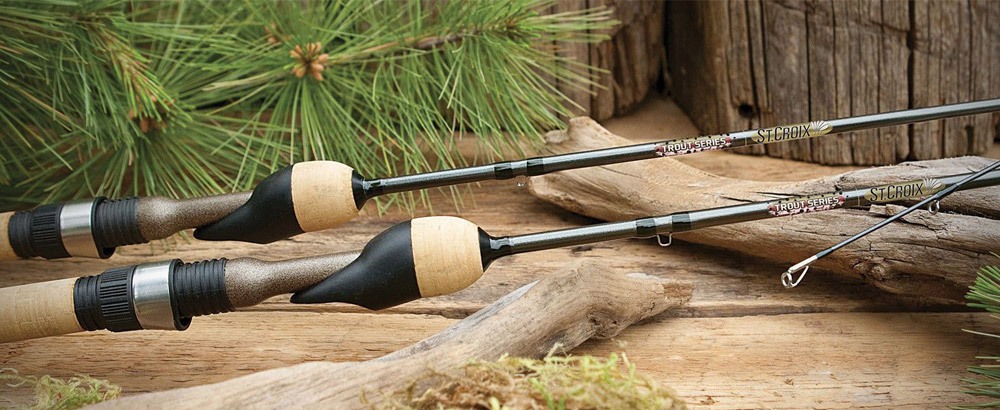
You’ve cast your line, and presented your bait perfectly, and now, you feel that thrilling tug on your line – you’ve got a bite! But how do you ensure that your catch doesn’t turn into the ‘one that got away’? Let’s break down the process of setting the hook, reeling in the fish, and safely releasing it if needed. 🎣💡
Setting the Hook
A properly set hook is key to ensuring your fish doesn’t escape. Here’s how:
- Timing is Everything ⏱️: Wait until you feel a steady pull on your line before setting the hook. Setting it too early might mean you pull the bait out of the fish’s mouth.
- The Quick Flick 🎣: Once you’re sure the fish has taken the bait, give your rod a quick, firm upward flick to set the hook in the fish’s mouth.
Reeling in the Big One
Now that the fish is hooked, it’s time to bring it in:
- Steady as She Goes 🐟: Maintain constant pressure on the line, but be prepared to give some slack if the fish makes a run.
- Play the Game 🎮: If it’s a large fish, you might have to tire it out a bit before reeling it in. This “playing” process requires a balance of reeling in and letting out the line.
Safely Releasing Your Catch
If you’re practicing catch-and-release, or if the fish is undersized, you’ll need to release it safely:
- Wet Your Hands 💦: Wetting your hands before handling the fish can protect its delicate scales and slime coat.
- Handle with Care 👐: Support the fish horizontally. Never hold it by the gills or eyes.
- Quick Release 🌊: Minimize out-of-water time and release the fish as soon as possible to help it recover quickly.
🔶The thrill of the catch is what draws us to fishing, but remember to respect the fish and the environment. Stay tuned as we tackle the important topics of safety and conservation in fishing up next. Keep those lines tight! 🎣🌿
🔒🌳 Beyond the Catch – Emphasizing Safety and Conservation in Fishing
Fishing isn’t just about landing the biggest fish; it’s also about ensuring that we can enjoy this pastime for generations to come. From safety precautions to conservation measures, let’s examine how to fish responsibly and safeguard our valuable water resources. 💧🎣
Safety First – A Must for Every Angler
Whether you’re a seasoned pro or a first-timer, safety should always be a priority:
- Handle with Care 🎣: Fishing gear can be dangerous if mishandled. Keep hooks covered when not in use and always be aware of your surroundings when casting.
- Stay Afloat 🌊: If you’re fishing from a boat, always wear a life jacket. It doesn’t matter how good a swimmer you are, accidents can happen.
- Weather Watch ⛈️: Check the weather forecast before you head out and be prepared to take shelter if conditions deteriorate.
Fishing Ethically – The Path to Sustainable Angling
Along with safety, ethical fishing practices are crucial for the conservation of fish populations and aquatic habitats:
- Catch and Release 🐟: Consider releasing fish that are under the legal size limit, overpopulated species, or rare species. Use barbless hooks or circle hooks to minimize harm.
- Limit Your Catch, Don’t Catch Your Limit 🎒: Just because regulations say you can keep a certain number of fish doesn’t mean you should. Take only what you need.
- Leave No Trace 🌿: Always clean up after yourself and leave your fishing spot as pristine as you found it.
Respecting Rules and Wildlife
Finally, respecting fishing regulations and the local wildlife is a responsibility shared by all anglers:
- Follow the Rules 📜: Fishing regulations exist for a reason. Respect bag limits, size limits, and fishing seasons to help sustain fish populations.
- Coexist with Wildlife 🦆: Be respectful of other creatures that share the water. Avoid disturbing nesting birds or other wildlife you encounter.
🔶In the end, the future of fishing lies in our hands. By fishing responsibly and promoting conservation, we ensure that future generations can enjoy the thrill of the catch as we do. Stay tuned for our final thoughts and a recap of what we’ve discussed. Keep casting, and stay responsible! 🎣💚
Beginner’s Guide On How To Catch Fish
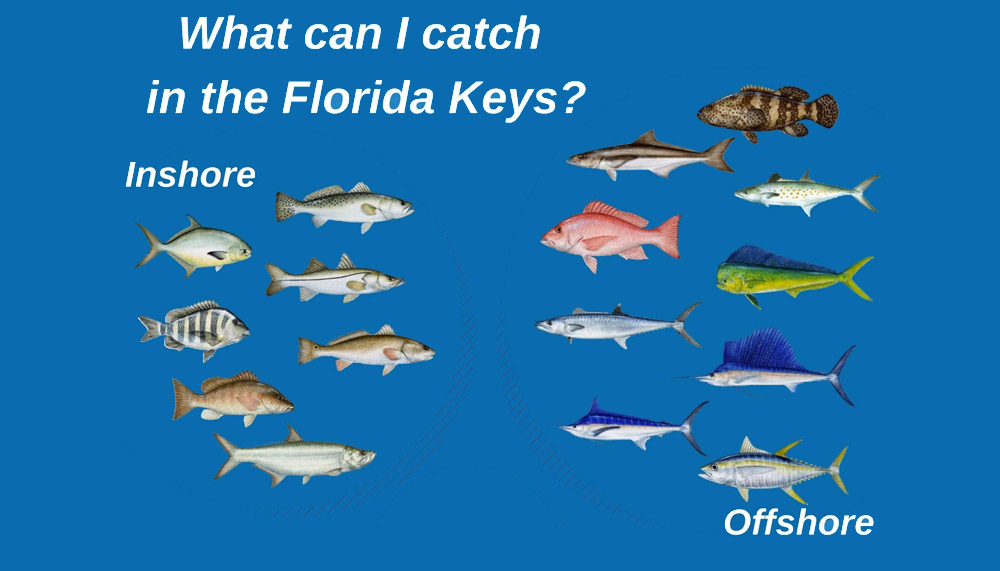
This is a quick guide for those who just want to start their fishing journey. Fishing is a relaxing and fun hobby. Of course, you would like to fish too. And fishing is a philosophy, if not a science in itself, for beginners. Many fishing tips and tricks for beginners help from the first steps, but real progress is only made through experience over time. In this article, I will give you some basic information on how to catch different types of fish. After reading, you will be able to decide what kind of fish you want to fish and, guided by my advice, you will be able to do it.
While there are many different techniques and approaches to fishing, here are some general steps to follow:
- Choose your fishing location: Research potential fishing spots in your area, such as rivers, lakes, or ocean piers. Check regulations and licensing requirements for the specific location.
- Select your fishing gear: Choose the appropriate fishing rod, reel, line, and bait or lures for the type of fish you’re targeting and the fishing location.
- Rig your equipment: Rig your rod with the appropriate line and terminal tackle, such as hooks, weights, and swivels.
- Cast your line: Stand in a position where you can effectively cast your line into the water, and aim for a spot where fish may be feeding or hiding.
- Wait for a bite: Once your line is cast, keep an eye on the rod tip for any movement that may indicate a bite. Be patient and allow time for the fish to take the bait.
- Set the hook: When you feel a tug on the line or see the rod tip bend, quickly jerk the rod upward to set the hook in the fish’s mouth.
- Reel in the fish: Once the fish is hooked, reel in the line while keeping tension on the rod to avoid losing the fish. Use the rod to guide the fish towards you.
- Land the fish: Use a net or your hands to safely bring the fish out of the water. Remove the hook carefully, and release the fish back into the water if desired.
🔶Remember to always follow local fishing regulations and practice responsible fishing practices, such as catch-and-release.
How to Catch Trout
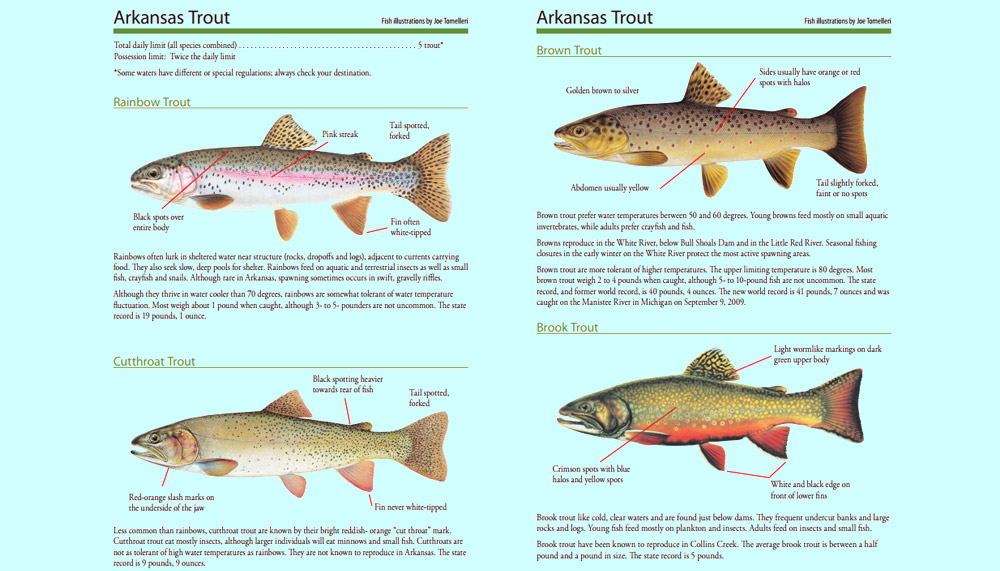
Optimal trout fishing aligns with the rhythm of nature’s seasons. It’s a game of strategy that begins in spring, as the waters warm and the trout become less wary. Timing, like in many pursuits, is pivotal. Late April to early May emerges as an ideal window for casting your line, for the waters are serene and the fish are active. Come June, the tranquility is disrupted by a surge in fishing activities, which might not offer the best odds.
One intriguing aspect of this activity is leveraging the trout’s spawning migration. This, however, shouldn’t be construed as an encouragement to exploit the closed season. It’s noteworthy that large trout exhibit aggressive behavior after spawning, and a well-timed trip can reward the fisherman handsomely.
Trout are resilient swimmers, managing well in warm waters, but the colder the temperature, the better the conditions for their survival. This explains the preference for the cooler first weeks of the fishing season. Even in the height of summer, the trout find solace in the chill of shaded streams fed by groundwater sources. Such locations with even temperature balance and structural elements such as deadwood and stones provide a suitable habitat for these fishes.
Given their preference for pure and oxygen-rich waters, trout tend to avoid bodies of water with temperatures exceeding 20-21 degrees Celsius. In regions with limited food, trout might grow to a mere half a kilogram, while favorable conditions can foster growth up to 1 – 1.5 kilograms or more.
Choosing an apt fishing spot is the cornerstone of an effective fishing strategy. With trout being a species that spawns in the fall, the fishing season usually commences as the rivers unfreeze. Trout can be caught in winter in regions where waters remain unfrozen, albeit with a passive demeanor.
Trout’s activity level surges as the first meltwater trickles into the river, providing clear and fish-visible waters. Early spring witnesses trout gravitating towards their winter haunts – the pits, eddies below the rifts, areas of moderate current – where food is aplenty. However, the water’s increasing turbidity with rising levels makes locating trout challenging.
The ideal rod for trout fishing is a float rod – the longer, the better. It allows for far casts and prevents anglers from revealing their positions. Paired with a simple reel of small drum capacity, a light rod with a stiff tip and running rigging should suffice.
As far as bait is concerned, a dung worm or scapula, particularly the redder variety, serves well. Bigger trout are more discerning, preferring whole and mobile worms. If worms are unavailable, alternatives include insect larvae, small fresh fish pieces, or trout entrails. Large insects make excellent summer bait when float fishing, while fry becomes more attractive as winter approaches.
The distinctive feature of catching trout with a float is the methodical downstream floating of the float and bait. The bait hovers near the bottom, brushing against its contours, and is periodically restrained to keep it ahead of the float. This method, effective in slow currents of quiet reaches and channels between lakes, requires the angler to reel the line back to the original position once the bait floats out of sight. With favorable conditions, an angler can follow the float along the shore, maintaining a safe distance from the water.
This method gains particular efficacy during dusk at the mouths of rivers and streams, enabling the angler to take a vantage point without risking being spotted by the fish. To improve visibility, the float should ideally be white. This professional approach, matched with nature’s rhythm, significantly increases the chances of a rewarding trout fishing experience.
Here’s a detailed guide on how to fish for trout, a popular freshwater game fish.
Understanding Trout 🐟
Trout is a term that encompasses several species including Rainbow Trout, Brown Trout, Brook Trout, and others. They are known for their beautiful colors, their ability to put up a great fight when hooked, and their culinary value. Trout are cold-water fish and can be found in both lakes and rivers.
Equipment You’ll Need 🎣
- Rod and Reel: A light to medium action rod between 5 to 7 feet long is generally a good choice for trout. A spinning reel is typically used for trout fishing, especially for beginners due to its ease of use.
- Line: A 4 to 8 pound test monofilament line is typically suitable for most trout fishing scenarios.
- Hooks: Sizes 4 to 12 are generally used for trout fishing, depending on the size of the trout and the type of bait used.
- Baits and Lures: Trout will bite on a wide range of baits and lures. Live baits like worms, salmon eggs, or minnows are often used. Artificial lures such as spinners, spoons, and small crankbaits can also be very effective.
Fishing Techniques 🔄
- Casting: This is the most common method for trout fishing. Cast your bait or lure into the water and slowly reel it back, imitating the movements of the prey trout eat.
- Drifting: This involves casting your bait upstream and letting it drift down naturally with the current. It’s a highly effective technique in rivers and streams.
- Trolling: If you’re fishing in a lake from a boat, trolling (dragging a lure behind the boat) can be a successful method for catching trout.
Best Time and Locations ⏰
Trout can be caught all year round, but the best times are usually in the spring and fall when the water temperatures are more moderate.
Trout prefer cold, clear waters. In rivers and streams, they’re often found in areas with cover like undercut banks, fallen trees, or rock pools. In lakes, they may be found near drop-offs, weed beds, or around structures like docks.
Playing and Landing the Fish 🎣
When you hook a trout, keep the line tight and reel the fish in slowly while it tires itself out. Trout are known for their acrobatic leaps, so be ready for a fight. Use a net to land the fish safely.🎣🍀
How to Catch Tilapia
![]()
You can catch tilapia both on the float tackle and on the bottom. Tilapia simply loves shrimp and shrimp meat is perhaps the best bait for catching this fish. You can catch this fish both with a swing rod and with a feeder. It is a good idea to feed the tilapia fishing spot. You can catch these fish in places where there is no ice cover. This fish loves to live at the bottom of a lake, river, and also pond. In addition to shrimp, tilapia is well caught on dough flavored with sunflower oil. But the oil should be unrefined with a smell. Tilapia also likes this nozzle. The ideal times to catch this fish are early sunrise, early sunset, and midday.
Understanding Tilapia 🐟 Tilapia are warm-water loving fish that are often found in shallow streams, ponds, rivers, and lakes. They are usually plant-eaters but will also consume small aquatic insects and organisms. Tilapia are hardy fish, known for their fast growth and breeding rates.
Equipment You’ll Need 🎣
- Rod and Reel: A medium-light rod with a spinning reel is a good choice for tilapia. These are versatile, easy to handle, and perfect for casting light lures or bait.
- Line: A 6-10 lb test monofilament line will do the job well.
- Hooks: Since tilapia have small mouths, smaller hooks (size 4 to 1) work better.
- Bobbers/Floats: These are not necessary, but they can be helpful indicators of when a fish has taken your bait.
Bait 🌱 As tilapia are omnivores, they can be caught with a variety of baits. Earthworms, crickets, bread balls, corn kernels, or small dough baits can be successful.
Rigging 🎆 For tilapia, a simple bottom rig or a float rig can be used effectively:
1. Bottom Rig:
- Start by tying your hook onto your line.
- About 1-2 feet above your hook, attach a small split shot weight. This will keep your bait near the bottom.
2. Float Rig:
- Tie your hook onto your line.
- Attach your float 1-3 feet above the hook, depending on the water’s depth and where the fish are feeding.
After rigging, add your chosen bait to the hook.
Techniques 🔄 Once you’ve got your bait and rig setup, cast your line into the water where you believe the fish are. If you’re using a bottom rig, let your bait rest on the bottom. If you’re using a float rig, adjust the depth as needed.
When you feel a bite or see your bobber dip, give your rod a quick, firm pull upwards to set the hook. Tilapia can be crafty, often nibbling bait off the hook, so timing is crucial.
Best Time and Locations ⏰ Tilapia are most active in warm conditions. Early morning and late afternoon on sunny days can be the best times. Look for them around structures like rocks, fallen trees, reeds, and man-made structures.
How to Catch Walleye
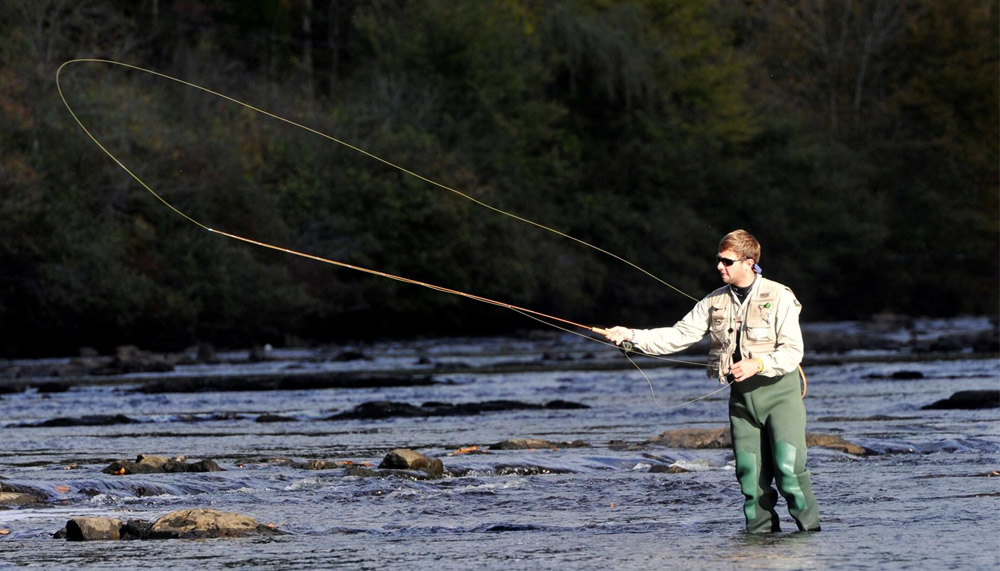
Large walleye are caught by trolling. walleye reacts actively to fly lures. For fishing, traditional fly fishing tackle is used. Walleye is well caught on steep shores. Young fish keep in flocks, therefore, if the fisherman manages to bump into it, excellent fishing is guaranteed, although the specimens will not be too large. It is better to look for them in pits with snags, boulders, flooded trees. In hot weather, it often hides deep at the bottom, so it is better to fish from a boat. If you manage to find walleye in the summer, then a series of bites is guaranteed. Walleye will like active baits best, either artificial or live.
Understanding Walleye 🐟 Walleye are primarily nocturnal predators, often found in deeper, darker waters during the day and coming to shallower waters to feed at dusk and dawn. They thrive in a variety of environments, but they prefer cooler waters with plenty of structure like rock formations, submerged objects, or weed lines.
Equipment You’ll Need 🎣
- Rod and Reel: Medium-weight spinning or baitcasting setups are perfect for walleye. They offer the balance between sensitivity and strength you need for these crafty fish.
- Line: A 6-12 lb test monofilament line is typically sufficient. Some anglers prefer braided line for its sensitivity and strength.
- Hooks: A size 2-4 hook should suffice for most situations. Walleye are notorious light biters, so sharp hooks are key.
- Lures/Bait: Jigs, live minnows, leeches, or crawler harnesses are highly effective.
Rigging ✨ There are several popular rigs for walleye fishing, but let’s focus on two basic ones that work particularly well for beginners:
1. Jig Rig:
- This is as simple as threading a live minnow or a soft plastic bait onto a jig head. The jig’s weight should match the fishing conditions. Use lighter jigs in shallow waters or heavy current, and heavier ones in deep water.
2. Slip-Sinker Rig:
- Start by threading a slip sinker onto your line, then tie a swivel onto the end.
- Attach a 3-6 feet leader line to the other end of the swivel, and tie your hook at the end of this leader line.
- This rig allows walleye to pick up the bait without immediately feeling the resistance of the weight.
Techniques 🔄 Cast your line or drop your bait near likely walleye hangouts – near structures, drop-offs, or weed edges. If using a jig, let it sink to the bottom and twitch or “hop” it along with short rod lifts. For the slip-sinker rig, cast it out, let it sink to the bottom, and slowly retrieve it.
Best Time and Locations ⏰ Walleye are most active during low-light conditions, so early morning and late evening are prime fishing times. Overcast days can also be productive. They are often found near structures or in transition zones between different depths or types of bottom.
How to Catch Crappie
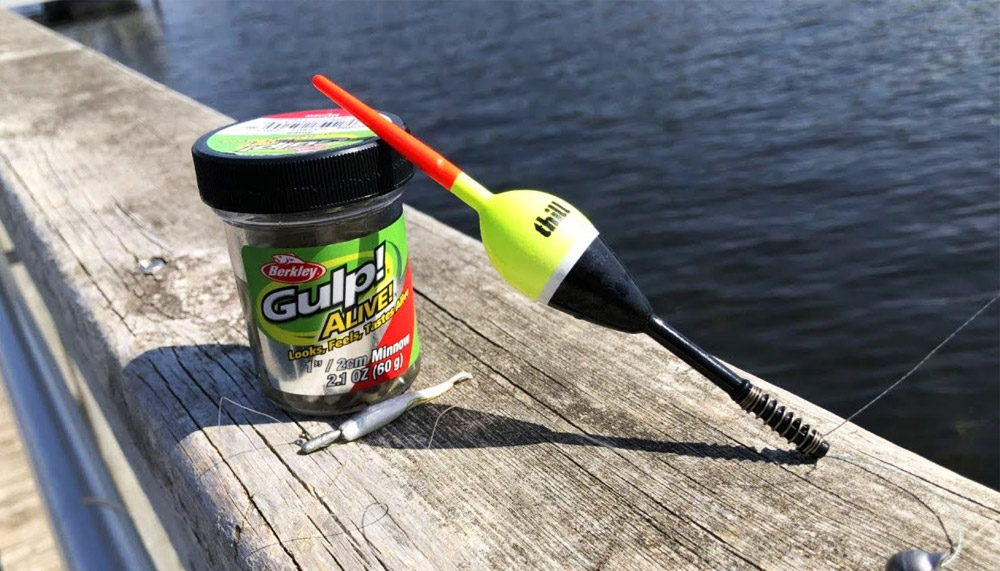
One of the most important steps in crappie fishing is finding them. Crappies move throughout the year as the spawning season comes and goes and the water temperature fluctuates. They also have some key habitat requirements that remain constant. They love to dwell in stone piles, in fallen trees in the water. They also prefer to go deep into the water when not spawning. Deepwater maintains a more stable temperature than shallow water, which in turn means more stable living conditions. Crappie fishing is possible with ultra-light spinning rods. You can also use telescopic racks to catch this fish. For many crappie fishing methods, very long rods are required for effective fishing. The most popular and effective crappie bait is the jig. You can also use soft baits.
Understanding Crappie 🐟 Crappie are schooling fish found in many freshwater habitats across North America. They come in two varieties: white and black crappie, but the fishing techniques used for both are largely similar. Crappie tend to hang out near structure like submerged timber, weed beds, or man-made fish attractors.
Equipment You’ll Need 🎣
- Rod and Reel: Light to medium-light action rods work well. Some anglers prefer longer rods in the 6 to 10-foot range for their ability to cast light lures a long distance.
- Line: 4-8 pound test line is common for crappie fishing. Monofilament is the most popular, but fluorocarbon can also work well due to its low visibility.
- Hooks: Size #1 to #6 hooks are typically used for crappie.
- Baits/Lures: Minnows and jigs are very popular for crappie fishing. Crappie also respond well to small spinners, spoons, and crankbaits.
Rigging 🌟 Let’s look at two popular rigging setups for crappie:
1. Bobber Rig:
- This is a classic setup that’s easy for beginners to use. Start by tying your hook to the line. Next, attach a bobber 1-3 feet above the hook (the exact depth may vary depending on where the crappie are feeding). Finally, bait the hook with a live minnow or a jig.
2. Jigging Rig:
- Simply tie a jig (1/16 to 1/8 ounce is a good starting point) directly to your line. No bobber is needed. You can tip the jig with a minnow or use a soft plastic bait.
Techniques 🔄 Crappie fishing can be done from shore or a boat. Cast your line out near structure, and let your bait sink to the level where you suspect the fish are holding. If you’re using a bobber rig, watch for the bobber to dip or move, indicating a bite. With a jig, slowly twitch your rod tip to give the bait a tempting action.
Best Time and Locations ⏰ Early morning and late evening are often the best times to fish for crappie, especially in the warmer months. Crappie are structure-oriented fish, so look for submerged trees, brush piles, or artificial structures in the water. During the spawn in spring, crappie move to shallow water and can be easier to catch.
How to Catch Lobster
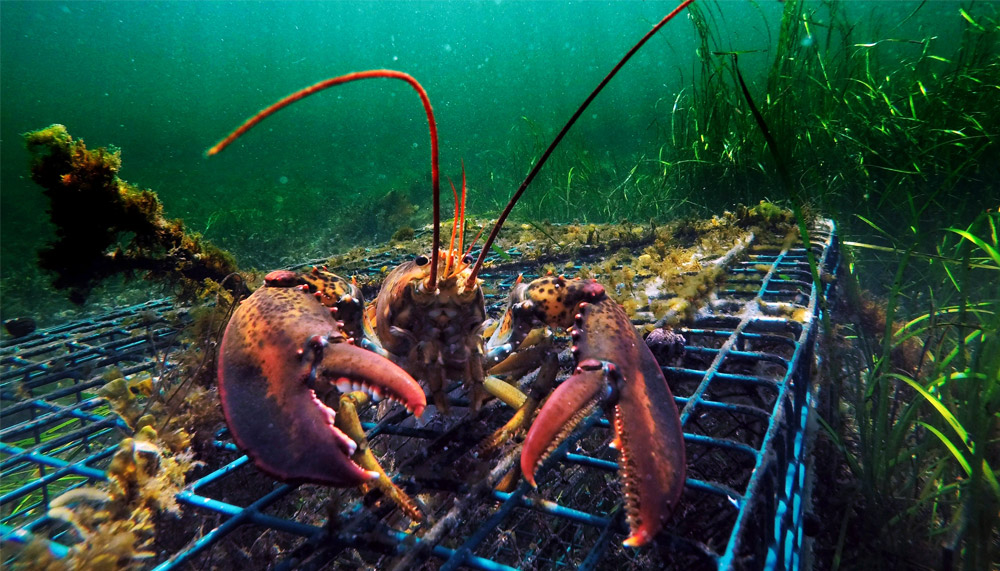
Fishing for lobsters can be quite an exciting and rewarding experience, but it’s important to note that regulations vary significantly by location, and in many areas, a special license is required. Here’s a basic guide to lobster fishing, which should be adapted to the specific regulations and conditions in your area:
Understanding Lobsters 🦞 Lobsters are marine crustaceans found in every ocean. They are typically found in rocky, sandy, or muddy bottoms from the shoreline to beyond the edge of the continental shelf.
Equipment You’ll Need 🎣
- Lobster Traps: These are specially designed cages that lobsters can enter but not exit. They typically have one or more entrances, and contain bait to attract lobsters. Traps can vary greatly in size and design depending on local regulations and personal preference.
- Buoy and Rope: Each trap is attached to a buoy at the surface by a long rope. The buoy is essential for locating and retrieving your traps, and usually must be clearly marked with your identification information.
- Bait: Common bait for lobster traps includes fish heads, herring, or other types of seafood.
- Boat: You will need a boat to set and retrieve your lobster traps. The size of the boat will depend on how far offshore you are fishing.
- Gloves: Lobsters have strong, sharp claws. Gloves are needed to protect your hands when handling them.
- Measuring Gauge: This tool is used to measure the carapace (body) of the lobster to ensure it meets minimum size requirements.
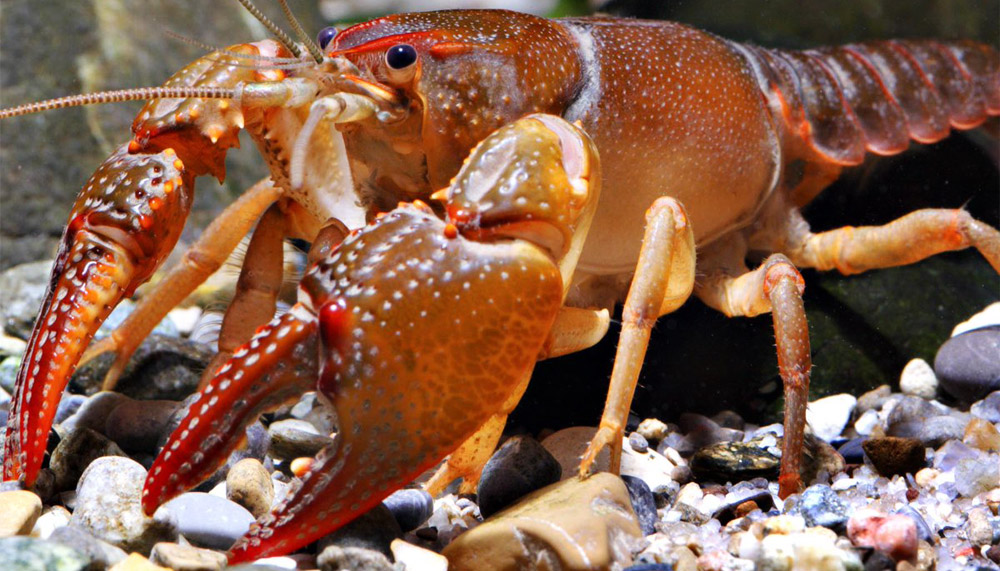
Techniques 🔄 Lobster fishing involves dropping baited traps to the seafloor, waiting for lobsters to enter the traps, and then hauling the traps back to the surface.
- Bait your traps: Place your chosen bait inside the bait bag or pouch in the trap.
- Set your traps: Choose a location where you think lobsters may be present. Lower the baited trap from your boat to the seafloor.
- Wait: After setting your traps, you need to give the lobsters time to find and enter them. This could be a few hours or even a few days depending on local regulations.
- Retrieve your traps: Haul your traps back to the surface using the attached rope and buoy.
- Check your catch: Any lobsters inside the trap can now be removed. Use your measuring gauge to check that they meet the minimum size requirements. Any undersized lobsters, or females carrying eggs, must be returned to the water immediately.
Best Time and Locations ⏰ Lobsters can be caught year-round, but many locations have a specific lobster season. This usually falls in the warmer months when lobsters are most active. Prime locations typically include rocky areas or places with plenty of hiding spots.
Remember, lobster fishing is heavily regulated, and rules can vary greatly depending on your location. Always make sure you are fully aware of, and adhere to, all local laws and regulations. Lobster fishing can be a lot of fun and the reward of a fresh lobster dinner is hard to beat. Good luck!
How to Catch Tuna
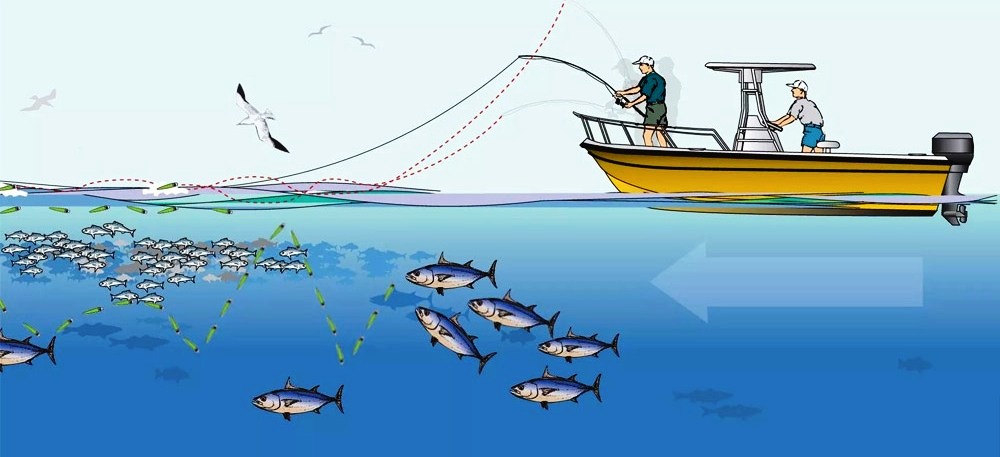
The most common amateur way to catch large tuna is by trolling. In addition, tuna are caught and cast for spinning, and with the help of natural baits. At the same time, tuna can be lured in various ways, for example, with the help of air bubbles. For this, boats are equipped with special units. The tuna thinks that these are accumulations of fry and comes close to the vessel, where they are caught with spoons. For tuna fishing, traditional sea lures are used, corresponding to the type of fishing.
Trolling, most often, is caught on various spinners, wobblers, and silicone imitations. Natural baits are also used. When fishing with a spinning rod, various sea wobblers, spinners, and other artificial imitations of aquatic inhabitants are often used. When fishing for small tuna to prepare bait or entertainment during sea trips, along with spinning tackle, simple rigs can be used for catching fillets or shrimps on pieces. Most of the species live in tropical and subtropical waters of the World Ocean. In addition, fish live in the Mediterranean and the Black Seas, but in the latter, tuna fish are quite rare. Periodic visits of tuna to the North Atlantic and the Barents Sea are known.
Tuna fishing can be an exciting challenge, as these are strong, fast, and high-endurance fish. There are several species of tuna, including Bluefin, Yellowfin, and Albacore, each of which can require different strategies and techniques.
Before you go, it’s crucial to check local regulations as tuna fishing is highly regulated due to conservation concerns.
Understanding Tuna 🐟 Tuna are pelagic fish, meaning they live in the open ocean rather than close to the coast. They’re known for their speed, strength, and the delicious steaks that larger specimens can provide.
Gear You’ll Need 🎣
- Rod and Reel: You’ll need a strong, heavy-duty rod and reel to withstand the strength of a tuna. Conventional reels are often used in tuna fishing.
- Line: Tuna fishing typically requires a high-capacity reel filled with a strong line. The specific strength will depend on the size of the tuna you’re targeting, but 30-80 lb test line is common.
- Hooks: Circle hooks are a popular choice for tuna fishing because they tend to hook the fish in the corner of the mouth, which is great for catch and release.
- Lures or Bait: Tuna feed on a variety of fish and squid, so lures that mimic these prey (like feathers or cedar plugs) can be effective. If using live bait, small fish such as anchovies, sardines, or mackerel can be good choices.
Techniques 🔄
- Trolling: One of the most common techniques for catching tuna is trolling, where you drag lures or bait behind a moving boat. This allows you to cover a large area of water.
- Chumming: This involves throwing bait into the water to attract tuna to your location. Once the fish are gathered, you can cast your baited hook into the feeding frenzy.
- Fight Strategy: Once hooked, a tuna will often make long, powerful runs. It’s essential to have a well-maintained reel with a smooth drag system. Use the rod to lift the fish and the reel to gather line when the fish is not running.
Best Time and Locations ⏰ Tuna species are found throughout the world’s oceans, but hotspots include the Gulf of Mexico, off the East Coast of the U.S., and in the Pacific near Southern California and Hawaii.
Tuna can be caught year-round, but the best time will depend on the specific location and species. For example, Bluefin tuna are often caught in the Northeast U.S. from June to October, while Yellowfin tuna can be caught year-round in places like the Gulf of Mexico.
How to Catch Striped Bass
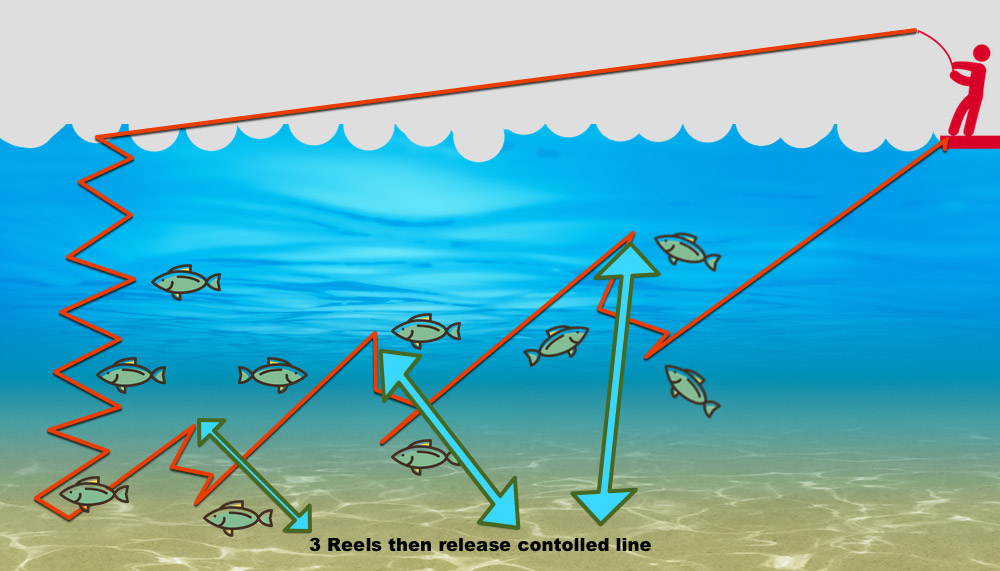
Fishing for striped bass can be carried out using such baits as sea worms, eels, shellfish, mackerel, and others. The choice of the rod depends on the type of fishing you are going to do. Factors such as freshwater, saltwater, from a boat, sitting on a pier, jetty, or pier, the type of bait, or if you are using bait. All of these factors influence your decision. Be sure to use a rod with the right weight, size, and flexibility for you. The striped predator is awake all year round and favorably perceives cool water. On the contrary, the summer heat and the water warmer than 18 – 20 degrees put him into a stupor. So for targeted fishing for large perch, you should choose winter, autumn, and spring. Catching occurs in the summer, but mostly in bad weather, in a cold snap. The most popular fishing for striped bass with artificial bait spinning.
Striped bass, also known as stripers, are popular among anglers for their size, fight, and taste. Here’s a beginner-friendly guide on how to catch these exciting fish:
Understanding Striped Bass 🐟 Striped bass are found in both freshwater and saltwater environments along the East Coast of the U.S, primarily from the Gulf of St. Lawrence in Canada to Louisiana in the Gulf of Mexico. They are known to be strong fighters and can grow up to 60 lbs.
Gear You’ll Need 🎣
- Rod and Reel: A medium to heavy action rod is suitable for striped bass fishing. A spinning reel or a baitcasting reel loaded with 15-20 lb test line is a good choice.
- Hooks: Size 1/0 to 3/0 hooks are a good range for striped bass. The choice between J-hooks and circle hooks depends on whether you plan to release the fish (circle hooks cause less damage).
- Bait and Lures: Striped bass aren’t overly picky eaters. Live or cut bait such as bunker, herring, eels, or clams can work well. When it comes to artificial lures, consider using soft plastic lures, swimbaits, or topwater lures.
Techniques 🔄
- Casting and Retrieving: This is a common method where you cast your bait or lure out and retrieve it. The retrieve can be a steady wind or a ‘jerk and pause’ motion.
- Trolling: Another method involves trolling a baited line behind a boat. This can be especially effective in larger bodies of water.
- Surfcasting: This is a popular technique for shoreline anglers where you cast your bait or lure into the surf. Heavier tackle is typically needed for this method.
Best Time and Locations ⏰ Striped bass are migratory fish, moving up and down the coast seasonally. They prefer water temperatures between 55 and 65 degrees Fahrenheit.
In terms of timing, early morning and late evening are typically the best times to fish for striped bass, as they tend to feed more aggressively during these periods. However, they can be caught throughout the day.
Stripers are often found in areas with structure, like around rocks, drop-offs, or where there’s a confluence of currents. Pay attention to birds diving on baitfish, as stripers often won’t be far behind.
How to Catch Salmon
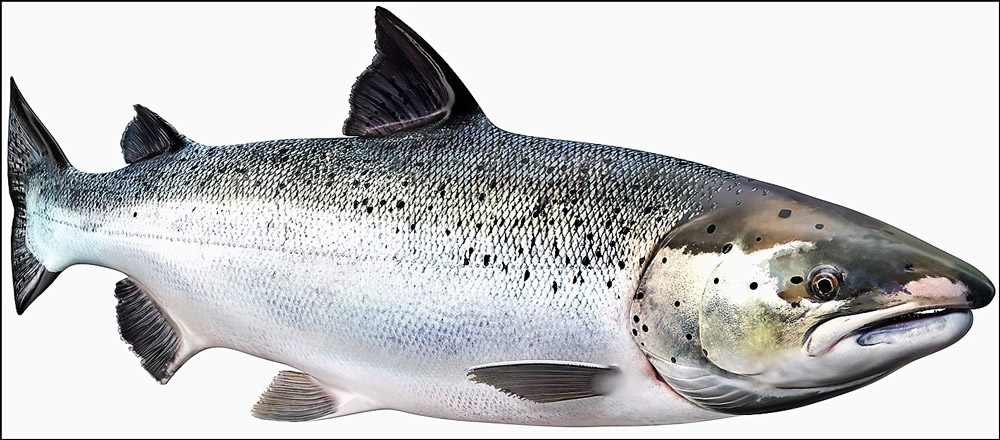
For salmon hunting, you need a reliable rod with fast action, 2-3 m long. Salmon belong to the category of anadromous fish that live in the sea or lakes and rise into rivers only for breeding. In most cases, after reaching 4-6 years, all salmon species enter very fast rivers with rapids and often rise upstream for more than one hundred kilometers. As experience shows, cloudy weather and the presence of a small wave are the best natural conditions for trolling salmon.
For this predator, bait is needed that will provoke the fish to pounce on the same spoon quickly and decisively. For this, it is important to provide such a visual effect and vibration that will be as similar as possible to the movements of the usual salmon prey.
Understanding Salmon 🐟 Salmon are migratory fish that spawn in freshwater rivers, but spend most of their lives in saltwater oceans. They’re known for their distinct, upstream journey to return to their birthplace to spawn.
Gear You’ll Need 🎣
- Rod and Reel: A medium to heavy-duty rod and reel is usually suitable for salmon fishing. The specific type can depend on the type of fishing you’re doing (e.g., trolling, fly fishing, etc.).
- Line: A line of about 15-20 lb test is standard for most salmon fishing. If you’re targeting larger species, you might need a stronger line.
- Hooks: Circle or octopus hooks are commonly used in salmon fishing. The size depends on the bait or lure used.
- Bait or Lures: Live bait, such as herring or worms, can be effective. Artificial lures, like spinners, spoons, or flies, are also popular. The choice depends on personal preference and the specific type of salmon you’re targeting.
- Net: A large, sturdy net is essential for landing a big salmon once it’s been hooked.
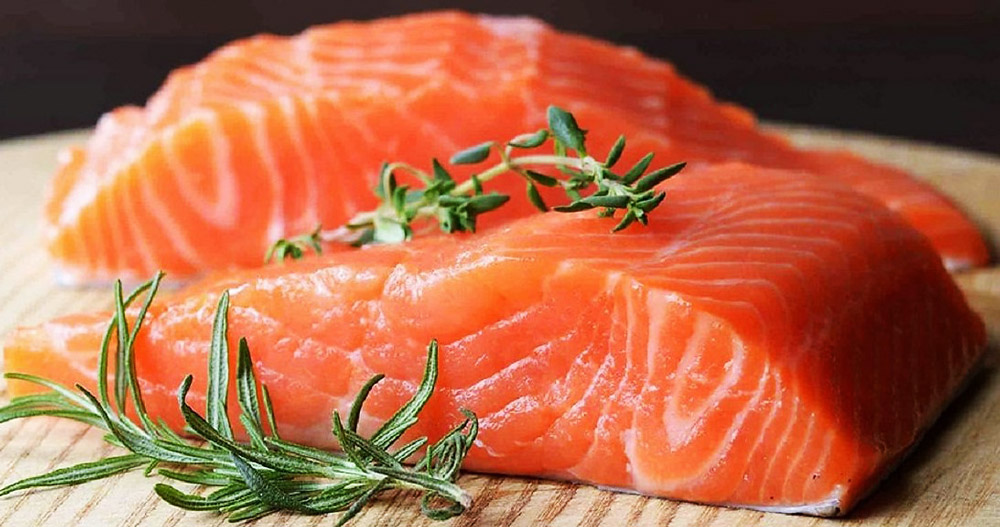
Techniques 🔄 There are several ways to fish for salmon, including trolling, casting, fly fishing, and more. Here, we’ll outline the basics of trolling, a popular method for catching salmon:
- Trolling: This technique involves dragging bait or lures behind a slowly moving boat. It’s effective because it allows you to cover a large area and present your bait at different depths until you find where the salmon are feeding.
- Set Your Bait: Attach your chosen bait or lure to your line. If you’re using a live bait, make sure it’s properly secured to your hook.
- Start Trolling: Once your bait or lure is in the water, slowly start moving your boat. Keep your line at a depth where you believe the salmon are located.
- Wait for a Bite: Be patient and keep a close eye on your rod tip for any signs of a bite.
- Set the Hook: Once you’ve got a bite, give a solid tug on the line to set the hook.
- Reel In Your Catch: Keep a steady tension on the line as you slowly reel in the salmon. Once it’s close to the boat, use your net to safely bring it aboard.
Best Time and Locations ⏰ Salmon can be found in both the Atlantic and Pacific Oceans. They are typically caught in the ocean during their feeding stage or in rivers during their spawning run.
In terms of timing, it heavily depends on the salmon species and location. Generally, many salmon runs occur in the spring and fall. Always check local fishing reports for the most accurate information.
How to Catch Sheepshead Fish
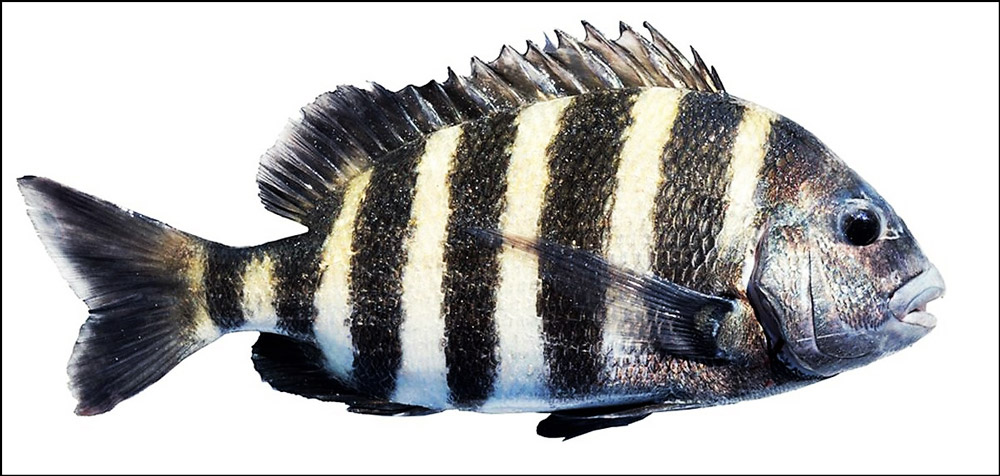
Various lures are suitable for catching this fish. Better to use baits such as Fiddler Crabs, live shrimp, and oysters. The best time to catch this fish is from December to April. The fish is found near bridges, marinas, and piers, as well as deep holes in the surf. It is best to use a medium-action rod. This will give you a light bite from the sheepshead fish.
Understanding Sheepshead Fish 🐟 Sheepshead fish are saltwater species found along the coasts, especially around piers, jetties, bridges, and rocky areas. They’re omnivores and have strong jaws that can crush oyster shells and crab exoskeletons, their preferred food.
Equipment You’ll Need 🎣
- Rod and Reel: A medium-action spinning rod and reel combo is perfect for sheepshead fishing. The sensitivity of the rod allows you to feel the subtle bite of the sheepshead.
- Line: A 10-20 lb braided line is recommended. Its sensitivity lets you detect even the slightest nibble, which is essential as sheepsheads are notorious for their light bites.
- Hooks: Sheepshead have small mouths relative to their body size, so a smaller hook (size 1-2) is better. Consider using a circle hook, as they improve the chances of hooking the fish in the corner of the mouth, which is essential for catch and release.
- Sinkers: Depending on the current, you’ll need a sinker to keep your bait at the bottom. Start with a 1/2 oz weight and adjust if needed.
Bait 🐚 Sheepshead fish are fond of small crustaceans and shellfish. Fiddler crabs, oysters, and shrimp make excellent bait. Remember, they have an exceptional sense of smell and taste, making fresh and live bait more effective.
Rigging 🔆 One popular rig for sheepshead is the Carolina rig. Here’s how to set it up:
- Thread your main line through the hole in your sinker.
- Tie a swivel to the end of your main line (this stops the sinker from sliding down onto the hook).
- Attach a 1-2 foot length of fluorocarbon leader to the other end of the swivel.
- Tie your hook to the end of the leader.
- Attach your chosen bait to the hook.
Techniques 🔄 Sheepshead bites can be hard to detect as they are ‘nibblers.’ They may nibble at your bait before fully biting, so it’s crucial to be patient and not try to set the hook too early. Wait until you feel a solid pull before lifting your rod tip to set the hook.
Best Time and Tide ⏰ Sheepshead can be caught year-round, but the peak season is usually during late winter through early spring. Fishing during a moving tide, especially a falling tide when crustaceans are being washed out, can be particularly productive.
How to Catch Largemouth Bass
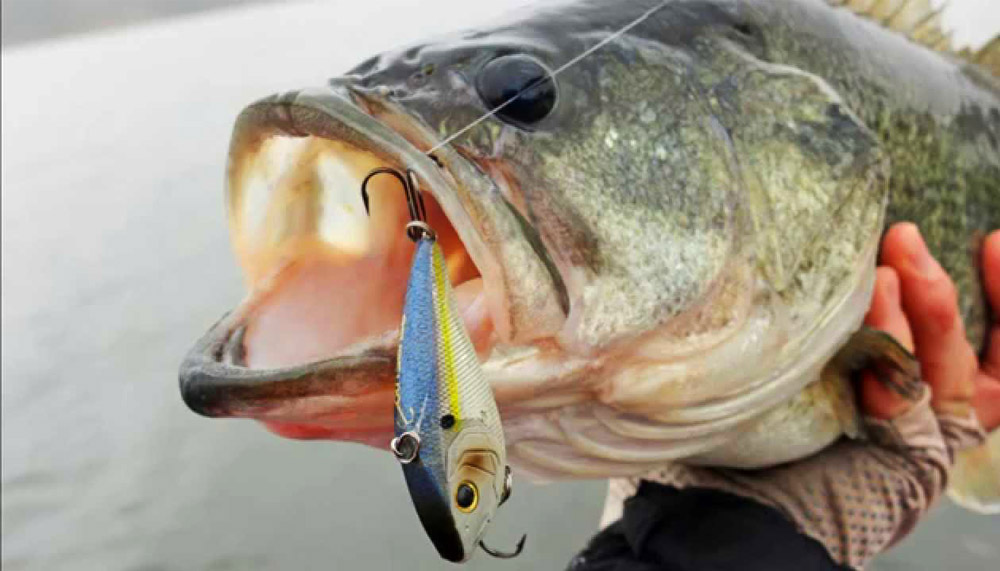
You can catch this fish with spinning or fly fishing. This fish is quite aggressive and very voracious, so it is best to use all kinds of bait. It can be various baits, spinnerbaits, volumetric lures: paddle and bladeless, silicone imitations, etc. The natural habitat of the bigmouth perch is various water bodies of North America: from the Great Lakes to the Mississippi basin and so on. Spawning takes place in the spring and summer, starting in March. Fish nest in small pits in sandy or rocky ground, often among aquatic vegetation. It is accompanied by mating games; females can lay eggs in several nests at once. Males guard the clutch, and then the flocks of juveniles for about a month. The fry grows very quickly, already at a body length of 5-7 cm from the larvae of various invertebrates they switch to fish feeding.
Let’s dive into the world of largemouth bass fishing, one of the most popular sports in the U.S. due to the widespread distribution of largemouth bass and their aggressive behavior.
Understanding Largemouth Bass 🐟
Largemouth Bass (Micropterus salmoides) are freshwater fish native to North America. Known for their size, strength, and acrobatics when hooked, these fish are exciting to catch. They’re typically green with dark blotches forming a horizontal stripe along each side.
Gear You’ll Need 🎣
- Rod and Reel: A medium-heavy rod with a fast action is an excellent choice for largemouth bass. Pair this with a spinning reel or baitcasting reel filled with 10-20 lb test line.
- Hooks: The size and type of the hook depend on your choice of bait. Generally, for soft plastic baits, a 2/0 to 4/0 offset worm hook is a good choice. For live bait, you may want to use a size 1 to 1/0 circle hook.
- Baits and Lures: Largemouth bass are predatory and will strike at a wide range of baits and lures. Worms, minnows, and frogs can be used as live bait. For artificial lures, consider using plastic worms, crankbaits, spinnerbaits, or topwater lures.
Techniques 🔄
- Casting: This is a common method, where you cast your bait or lure and wait for a bass to bite.
- Pitching and Flipping: These are precise casting techniques used to present baits quietly to bass hiding in cover.
- Topwater Fishing: This technique is exciting and involves using floating lures that look like prey on top of the water.
Best Time and Locations ⏰
Largemouth bass are most active in warmer temperatures. Spring and fall tend to be the best seasons to fish, especially early morning and late evening.
Bass are ambush predators and love to hide and wait for prey. They are commonly found around structures like weed beds, submerged logs, boat docks, lily pads, and reeds. They also prefer quiet waters such as ponds, lakes, or slow-moving rivers.
How to Catch Mahi Mahi
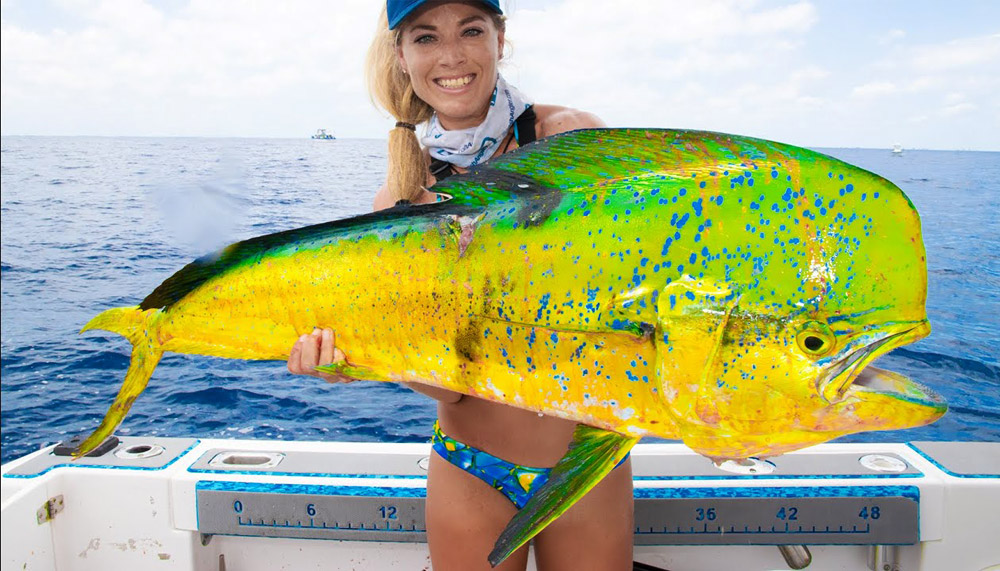
You can catch this predator by trolling. You will be able to fish this fish from the pier. This fish is found in tropical and temperate oceans all over the world. Mahi Mahi loves to eat small fish. The best bait for this fish is ballyhoo. Let’s take a deep dive into the techniques, gear, and strategies for catching Mahi Mahi, one of the most sought-after game fish due to its stunning colors, fight, and flavor.
Understanding Mahi Mahi 🐟
Mahi Mahi, also known as Dolphin Fish or Dorado, is a pelagic fish known for its stunning colors, acrobatic leaps when hooked, and excellent taste. They can be found in tropical, sub-tropical, and temperate waters worldwide.
Equipment You’ll Need 🎣
- Rod and Reel: Medium to heavy tackle is usually required for Mahi Mahi due to their size and strength. A 20-30 lb class rod matched with a conventional reel is usually a good choice.
- Line: A braided line of about 30-50 lb test strength is typically used.
- Hooks: Circle or J-hooks in sizes 5/0 – 7/0 are commonly used when using live or cut bait.
- Lures and Baits: Mahi Mahi are aggressive and will strike at a wide range of baits. Live baits such as squid, mackerel, or shrimp work well. They also respond well to trolling lures, especially those with bright colors (greens and yellows).
Fishing Techniques 🔄
- Trolling: Trolling with lures or rigged baits at speeds between 5-9 knots is a common and effective method for catching Mahi Mahi.
- Drifting: Drifting with live or cut bait can also be very productive. This method involves drifting over known Mahi Mahi grounds or near floating debris or weed lines where Mahi Mahi often congregate.
Best Time and Locations ⏰
Mahi Mahi can be caught year-round, but they’re most abundant during warmer months. They prefer warmer waters, usually above 68°F (20°C). They’re often found offshore near floating debris, buoys, and weed lines, which they use for cover and as a source of food.
Playing and Landing the Fish 🎣
Mahi Mahi are strong fighters and will often leap out of the water when hooked. Keep the line tight and exert steady pressure. A large net or gaff is usually needed to land these fish safely.
Please note that fishing regulations for Mahi Mahi vary by location, so always ensure you are fishing legally and ethically. Now, go out and enjoy the thrill of fishing for Mahi Mahi! 🎣🌊
How to Catch Bluegill
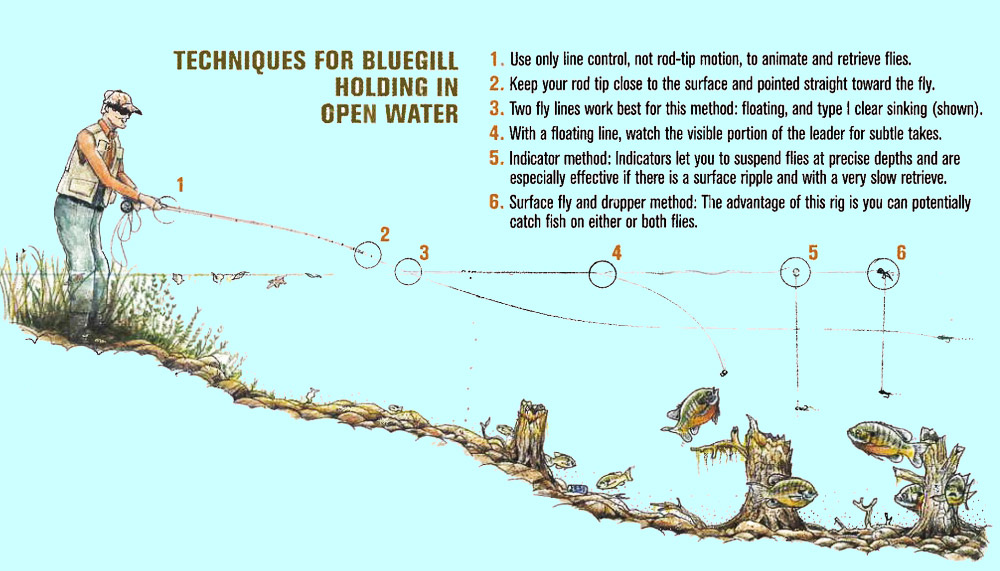
To catch this fish, your bait must be small. It is best to use live bait. I recommend using worms and nightcrawlers. You can also use artificial lures such as black jigs, tiny spinners. Using the fly fishing technique or in conjunction with a bobber, you can use baits such as poppers. The best techniques for catching bluegill are bottom Fishing, bobber Fishing, Drift Fishing, and Fly Fishing.
Understanding Bluegill 🐟 Bluegill, also known as bream, brim, or perch, are one of the most popular freshwater fish in North America. They’re small but aggressive, making them great fun to catch, especially for novice anglers. Bluegill are typically found in the calm waters of lakes and ponds but can also be found in slower rivers and streams.
Equipment You’ll Need 🎣
- Rod and Reel: A light or ultralight spinning rod and reel combination is ideal for bluegill fishing due to their smaller size.
- Line: A 2-6 lb test monofilament line should be more than sufficient. It’s thin, flexible, and less visible to fish, making it perfect for catching wary bluegill.
- Hooks: Use small hooks for bluegill — anywhere from size 6 to 12. Remember, the larger the number, the smaller the hook.
- Bobbers: A small, lightweight bobber can help you spot when a bluegill bites your bait. This is especially helpful for beginners.
Bait 🦐 Bluegills are opportunistic feeders. They’re often caught using live bait, such as worms or crickets. However, small soft plastics, flies, and spinnerbaits can also be successful.
Rigging 💢 The classic bobber rig is simple to set up and highly effective for bluegill:
- Start by tying your small hook onto the end of your line.
- About 1-2 feet above your hook, attach your bobber. The exact distance from the hook can vary based on how deep the bluegill are in the water.
- Place your bait on the hook. If you’re using a worm, you don’t need the whole thing—a piece that’s 1-2 inches long is enough.
Techniques 🔄 Bluegill fishing is often as straightforward as casting out your bobber rig and waiting for the fish to bite. When a bluegill takes your bait, the bobber will twitch or get pulled under the water. That’s your cue to set the hook with a quick, upward lift of the rod. Remember not to jerk too hard, or you might pull the hook out of the small mouth of the bluegill.
Best Time and Locations ⏰ Bluegill can be caught throughout the day, but early morning and late evening are typically the most productive times. They’re often found around cover, like vegetation, fallen trees, or man-made structures, where they hide from predators and hunt for food.
❓ FAQ: Tips and Tricks to Elevate Your Fishing Game
🎯🎣 Reeling In – Wrapping Up Our Fishing Journey
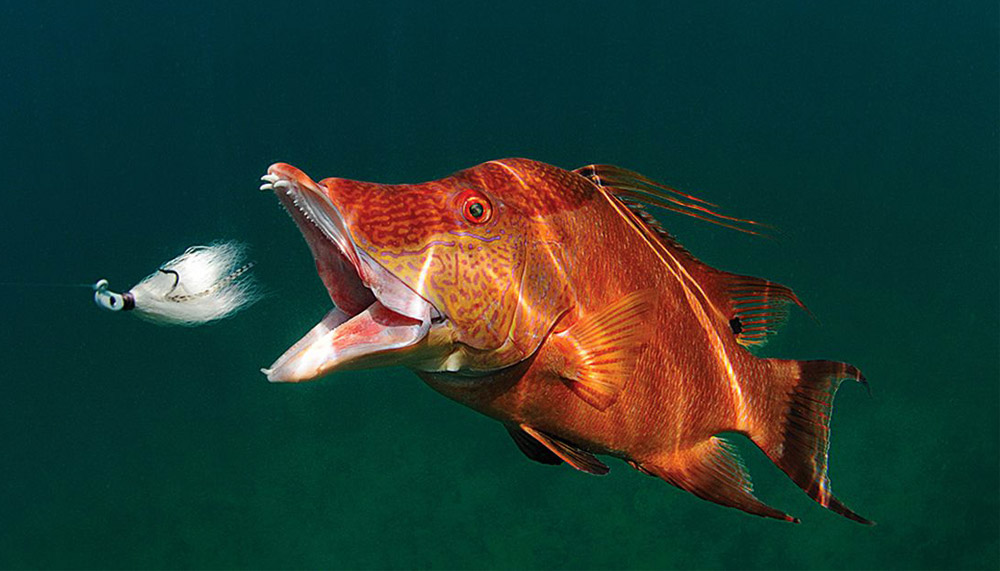
This article is just a godsend for novice fishermen. Now you know how to catch many types of fish and what you need for this. This is valuable information. Now you just need to take tackles with, bait and go on an adventure. Now your result will depend on your efforts and efforts. I hope that this article was useful to you and that you learned a lot of new things.
As we dock our boat and stow our gear, let’s take a moment to reflect on our journey through the world of fishing. From learning the basics to understanding fish behavior, choosing the right bait, mastering various fishing techniques, handling a catch, and promoting safety and conservation – we’ve covered a wide cast of topics. 📚⚓️
We started with the fundamentals of fishing, highlighting the different types of fishing and the equipment required. We moved on to understand fish, their species, habits, and the ideal conditions for their catch. We then delved into the art of choosing the right bait, weighing the pros and cons of live bait versus artificial lures. 🐟🎣
Next, we embraced the thrill of the catch, exploring various fishing techniques and how to apply them effectively. We shared the tricks of the trade on how to properly handle a catch, from setting the hook to safely release the fish. Finally, we emphasized the vital importance of safety and conservation in fishing, encouraging all anglers to respect our aquatic resources and fish responsibly. 🏅🌊
The line of learning never ends in the vast sea of fishing. So, we encourage you to take these tips and techniques and try them out in your next fishing adventure. Remember, every fishing trip is an opportunity to learn, enjoy nature, and perhaps even catch dinner! 🍽️😊
We hope that this guide has been as enjoyable for you to read as it has been for us to create. Should you have any feedback or questions, please feel free to drop a comment or reach out to us. After all, just like fishing, the joy of writing these guides is in the catch – your feedback and success stories! 📝💬
🔶So grab your gear, cast your line, and remember, the best fisherman is the one who has the most fun. 🎣🌈
More than a Nibble: Additional Reading and Gear Recommendations 📚🎣
Whether you’re a newbie angler or a seasoned fishing enthusiast, the path to mastering the art of fishing is paved with continuous learning and exploration. Here are some additional resources to assist you on this journey:
🔗 Essential Fishing Guides and Tutorials
- Understanding the Basics of Fly Fishing
- The Art of Casting: A Comprehensive Tutorial
- Mastering Saltwater Fishing: A Detailed Guide
📚 Further Reading Recommendations
- “The Complete Angler: A Connecticut Yankee Follows in the Footsteps of Walton” by James Prosek
- “The Little Red Book of Fly Fishing” by Kirk Deeter and Charlie Meyers
- “The Fisherman’s Ultimate Guidebook” by John Bailey
🛠️ Suggested Fishing Gear
- Top-rated Fishing Rods
- High-Quality Bait and Lure Selection
- Recommended Fishing Safety and Conservation Equipment
👥 Get In Touch
Feel free to reach out if you have any specific questions, need advice, or want a bit of extra mentoring in your fishing journey. I’m always happy to help fellow anglers!
🔶Remember, patience is key when it comes to fishing. Not every day will bring a catch, but every day spent fishing will bring valuable experience and, most importantly, a chance to enjoy the great outdoors. Keep casting and happy fishing! 🎣👍
Tags: #how to catch a fish / #beginner’s guide on how to catch fish / #how to catch river trout / #how to catch fish in a river / #how to catch fish in a lake / #how to catch a legendary fish / #how to catch a fish every time / #how to catch a fish fast

I live in Tenerife (Canary Islands) for the last 10+ years and share my daily fishing experiences on my website. Many years of personal experience as a fisherman and the vast experience of my friends allow me to write professionally on any fishing topics (from choosing a flashlight and equipment to deep-sea fishing).
All of my advice is based on practical real-world experience and will be useful to both novice anglers and professionals. Read more about the author.
Affiliate Disclosure: FishReeler.org sometimes gets paid for listings, through sponsors or affiliate programs like Amazon, Ebay, Cabelas, Bass Pro Shop, Shimano, Daiwa, Rapala, Renn, Okuma, KastKing, etс. Clicking a link helps keep FishReeler.org free, at no extra cost to you!
About the author: Each article is verified by the fishing expert Sergio Smirnoff. The articles are written by professional and amateur fishermen with 20+ years of fishing experience.
Note: The views and opinions expressed in this article are those of the authors and do not necessarily reflect the official policy or position of any agency. The articles are for informational purposes only, share your opinions in the comments and join the fishing discussions, let's share our fishing experiences together!

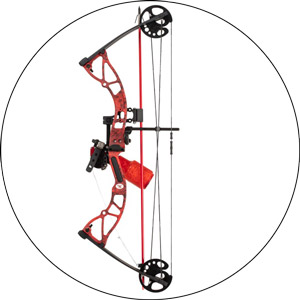
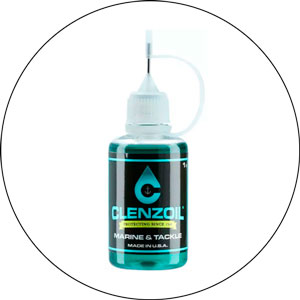
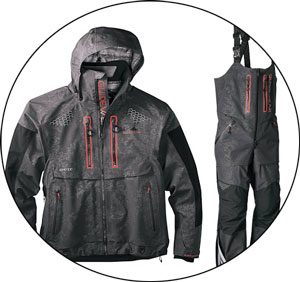
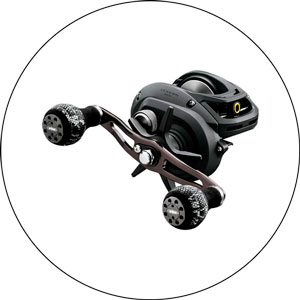
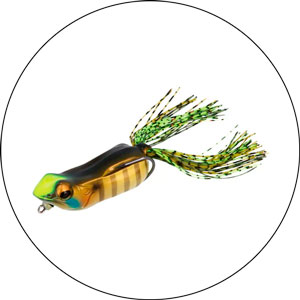

When it comes to fishing, it’s important to keep in mind that fish are often difficult to spot due to their camouflage. However, I always approach fishing with a positive attitude and expect to catch something. There are days, though, where despite my best efforts and knowledge of the area, the fish just aren’t biting.
One way to increase your chances of finding fish is to observe other factors such as good habitat and where they tend to be in a body of water. The best way to find out is to fish the area extensively. Remember, 90% of the fish are in just 10% of the water, so it’s crucial to find those specific locations.
Factors such as deeper pockets, hiding spots, baitfish, tributaries, bottom composition, and slack or slow-moving water can all be indicators of where fish are likely to be. In particular, fish tend to conserve energy behind current breaks or in slow-moving water where the water is a conveyor belt of food, allowing them to attack prey as it goes by. By keeping these factors in mind and exploring different locations, you’ll be well on your way to catching fish.
There are a lot of different approaches you can take. Personally, I don’t use live bait or real worms; I prefer using “fake baits” that are more fun to fish with and minimize the chance of the fish swallowing the bait. If you’re just starting out, I would recommend getting a rod with a reel already on it, but be sure to avoid bait casters as they require a lot of tuning and can result in line tangles and knots. Instead, go for a spinning reel which is user-friendly and has no real drawbacks.
Once you’ve got your rod and reel picked out, it’s time to think about your line. I’d recommend starting with an 8-10 lbs monofilament line as it’s the most common and user-friendly type of line. You don’t need to worry about braided lines or leaders just yet. Grab yourself a little tackle box or bag to keep your gear organized, and then start thinking about lures. The type of lure you choose will depend on how you want to fish and what species you’re targeting, so do some research before you make your purchase.
There are a few other things I’d recommend bringing with you on your fishing trips. Sunscreen is a must, as is a good pair of polarized sunglasses to help you see through the water. And don’t forget a set of needle-nosed pliers with a cutting edge to help you cut your line and safely remove hooks from fish. With a little bit of preparation and some patience, you’ll be reeling in fish in no time!
I recently came across your post about fishing on the American River in California and I couldn’t resist sharing my thoughts on it. As an avid angler, I have some tips that might help you catch some fish.
Firstly, I would suggest using either a 6-8 pound monofilament line or a 30-pound braided line with a 3-4 feet fluorocarbon leader. While monofilament is easy to use, the braided line is stronger and more durable. However, it can be difficult to tie lures to braided lines and it’s also visible in the water. This is where a fluorocarbon leader comes in handy. It’s virtually invisible in the water and can be easily attached to the braided line using a double uni knot.
Next, I would advise against using bait and weight rigs, especially power bait. These are only effective for stocked trout and are unlikely to work for other species of fish in the area. Instead, I would recommend using spinners such as rooster tails, which are simple and effective for catching most species of fish. However, the success of spinners is dependent on the color you choose, so I suggest getting a few different colors to experiment with.
Spoons such as Little Phoebes and Little Cleos can also be effective, as can crankbaits from companies such as Strike King and Rapala. Stickbaits are another option, which can be retrieved like crankbaits but will suspend in the water when you stop reeling. This pause and action can really induce strikes.
Lastly, I highly recommend trying the Texas rig. This involves tying a wide gap hook on your line and attaching soft plastic baits to it. This rig is weedless and can be used with a variety of baits such as Senko worms, shad, fake lizards, brush hogs, tubes, crayfish, and flukes. The Texas rig is a slow and patient method, but it’s incredibly effective, especially for bass. With a braided line, you’ll be able to feel every nibble and bump, which is essential for this method.
I’ve been fishing for a while now and I wanted to share some tips that have helped me catch more fish in lakes. Firstly, I’ve noticed that most fish tend to feed closer to the bottom and stay near cover like fallen trees, rocks, and tunnels. So, it’s best to use live worms, as they work wonders for a lot of species, and bigger worms can even get you bigger fish! But if you don’t have live bait, fake worms can also work for those same species.
In murky water, bright colors tend to grab the fish’s attention, and it’s always a good idea to match the size of your bait to the size of the fish in the lake. Don’t be afraid to cut a senko in half if you need to. Also, it’s important to match your hook to your bait. The fish needs to be able to get the hook in its mouth, so try to use the smallest hook possible. You can catch a small bass with a thumbnail-sized hook, so don’t overdo it.
However, keep in mind that some fish don’t like worms. Carp, for example, won’t touch worms but will go after bread and corn. And fish with teeth usually prefer to eat other fish. Fish also behave differently depending on the time of day and temperature, so it’s worth trying to fish during sunset or early morning if you haven’t already.
If you can, fish in shallower waters where you can actually see the fish. You can learn a lot by watching how live fish actually react to your bait. You’ll notice that fish can even see YOU and will hide when you approach. They’re not the smartest creatures, but they do have great self-preservation instincts, and that’s why they can sometimes be hard to catch. Ultimately, you need to make sure the fish are comfortable attacking whatever you’re throwing out there.
If you’re new to fishing and just starting out, I would suggest focusing on bait rather than lures. While lures can be effective in attracting larger predatory fish, your primary goal should be to simply catch fish of any size.
For beginners, I recommend using worms, maggots, or shrimp as bait. You can try bottom fishing using T or three-way swivels, or float fishing which makes it easier to identify strikes. It’s important to use a relatively thin line and a 2-foot 4 or 6 lbs test fluorocarbon leader should suffice.
By focusing on bait and using floats, you’ll increase your chances of catching something and gaining valuable experience as a new angler.
Thank you for sharing your experience and insights on fishing. It’s great to hear that you also started by pond hopping and used it to hone your casting skills with different lures.
I completely agree that trying out different types of lures is essential to find what works for you. It’s also important to adapt to the fishing conditions and use the appropriate lure for the situation. Your tips on using a 2in the curly tail on a 1/8 jig for catching crappie, bass, and cats, as well as using a critter craw on a 1/8 or 1/4 jig for slow work or a weedless worm for areas with weeds, are very helpful.
I also understand the feeling of hesitation when it comes to using certain lures, like the crankbait, because of the risk of getting stuck. But it’s all part of the learning process, and it’s important to keep trying and experimenting. Buying lures on clearance is also a great way to save money while still trying out different options.
Your comment is very informative and encouraging for beginners like me who are still learning the ropes of fishing. Thank you for offering to answer any further questions through PM. I look forward to trying out some of your tips on my next fishing trip!
Thank you for sharing your experience and tips on fishing from the bank of a lake. It’s great to hear that you’ve been successful in catching fish and that you’ve learned a lot from going out with your friend.
I completely agree that the temperature and depth of the bait are crucial factors in fishing. It’s important to experiment with different depths and see where the fish are biting. Starting with a depth of around 4ft and gradually going deeper to around 6ft is a good strategy, but it’s also important to be cautious of getting snagged and to pay close attention to the bait.
I also appreciate your emphasis on the importance of depth. Different fish species prefer different depths, so it’s important to adjust the depth of your bait accordingly. By being aware of the depth and adjusting your bait accordingly, you’ll have a better chance of catching fish.
Thank you for sharing your knowledge and experience with fishing during the winter. It’s great to learn that fish don’t hibernate during winter but instead their metabolism slows down, and they move to warmer parts of the lake to feed. It’s good to know that baitfish also congregate in these warmer areas, attracting predators, and creating a great opportunity for winter fishing.
I appreciate your insights on using blood in the water to attract fish. It’s interesting to know that it can be effective in attracting predators like catfish, but it’s important to keep in mind that using blood from larger fish like salmon or big catfish might not be the best idea. Bluegills and panfish are good options as they have less blood in them, which still enhances the flavor.
It’s also great to learn about the effective method of killing catfish, which can be tricky due to their strength. A few powerful bonks on the skull can usually knock them out, and carrying a small wooden mallet can be a good idea. Alternatively, one can buy a dedicated fish priest, which is essentially a small baseball bat, at an affordable price online.
I completely agree with what others have said. Moving to a new fishing spot can make a big difference in your catch. Fish tend to school with others of the same size, and smaller fish usually avoid the larger ones since they are prey. If you are targeting catfish, fishing deeper and farther out is usually more effective. For bass and other species, look for the best structure and cover where they can hide and ambush their prey.
Personally, I like to fish in areas where there are a lot of fish that are smaller in size but plentiful, such as 12-16 inch bass and walleye. However, I also know that there are other spots where I can catch bigger fish, even though they may be fewer in number. These bigger fish can range from 18-20 inches or more, but they are usually harder to catch since they are fewer in number and often more experienced.
It’s important to keep in mind that bigger fish have a lower probability of being in the upper size range for their species. A school of 12-inch fish can have 50-100 fish, while a school of 18-inch fish may only have 4-8 fish. So, catching big fish requires patience, skill, and a bit of luck.
One thing that can help catch bigger fish is using lures. It’s important to learn how to use each lure since they have specific techniques and work best in certain situations. So, don’t be afraid to experiment and try new things until you find what works best for you.